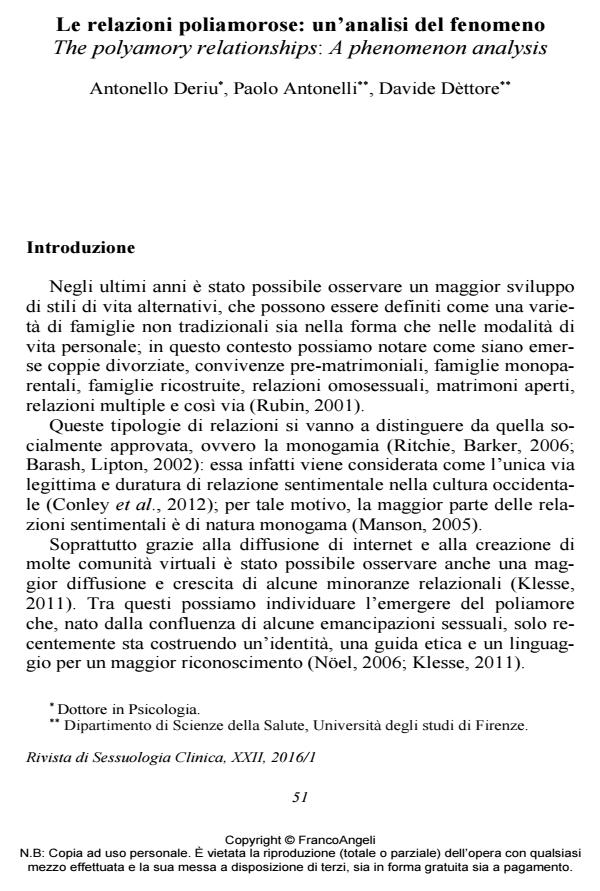The polyamory relationships: A phenomenon analysis
Journal title RIVISTA DI SESSUOLOGIA CLINICA
Author/s Antonello Deriu, Paolo Antonelli, Davide Dèttore
Publishing Year 2016 Issue 2016/1
Language Italian Pages 20 P. 51-70 File size 262 KB
DOI 10.3280/RSC2016-001003
DOI is like a bar code for intellectual property: to have more infomation
click here
Below, you can see the article first page
If you want to buy this article in PDF format, you can do it, following the instructions to buy download credits

FrancoAngeli is member of Publishers International Linking Association, Inc (PILA), a not-for-profit association which run the CrossRef service enabling links to and from online scholarly content.
Polyamory (loving many) is an alternative not monogamous relationship in a climate of consensus, responsibility and transparency. Through the analysis of academic literature, combined with papers by polyamorous activists, we tried to analyze this phenomenon. It was possible to explore the development and spread of a true culture and the values within these relationships: relational agreements, consent, love, commitment, loyalty and compersion. Since these reports are configured as multi-partner relationships, we have analyzed the various configurations that partners can take (oper relations and marriages, polyfidelity, not religious polygamy, triads, asexual and solo-poly), comparing the phenomenon of swingers and relational anarchists. Finally, we analyzed the problems within these relationships. Our main purpose is to try to implement a through analysis of the phenomenon, a base for future research.
Keywords: Polyamory, relationship, non-monogamy, love, romantic attraction, consensual
- The Kintsugi Art of Care: Unraveling Consent in Ethical Non-Monogamies Beatrice Gusmano, in Sociological Research Online /2019 pp.661
DOI: 10.1177/1360780418816103
Antonello Deriu, Paolo Antonelli, Davide Dèttore, Le relazioni poliamorose: un’analisi del fenomeno in "RIVISTA DI SESSUOLOGIA CLINICA" 1/2016, pp 51-70, DOI: 10.3280/RSC2016-001003